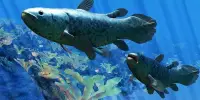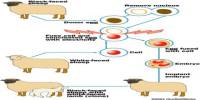According to Oregon State University studies, kelp forest restoration efforts may be most effective in regions where the bedrock seafloor is strongly shaped.
The findings, which were published in the Proceedings of the National Academy of Sciences today, are significant because kelp, huge algae with enormous ecological and economic importance around the world, is under threat from environmental change and urchin overgrazing.
The research, which was headed by recent graduate Zachary Randell while he was a doctorate student at Oregon State, demonstrates that kelp forests in places with ocean floor roughness, also known as substrate complexity or surface rugosity, tend to be more stable.
Urchins were found in kelp forests that grew in locations with a high level of substrate complexity, but they did not cause widespread kelp forest devastation. According to Randell, one theory is that the substrate complexity keeps “drift algae,” or detached fragments of kelp and other algae, which urchins prefer to eat over living kelp.
“Kelp forests are declining worldwide due to different combinations of environmental change and lower numbers of the predators that control urchins, like sea stars, cod, and sea otters,” Randell said.
“More and more kelp forests are transitioning into what are known as ‘urchin barrens,’ an alternative arrangement of the ecosystem with dramatically fewer species, including species of recreational, commercial and conservation interest.”
Kelp is a foundation species that can be found in about half of the world’s ocean ecoregions. They flourish best in cold water, where they develop huge aquatic forests that serve as vital habitat, food, and refuge for a variety of species. Climate change and a warming ocean are particularly hazardous for them because of their sensitivity to certain growing circumstances.
Kelp forests are declining worldwide due to different combinations of environmental change and lower numbers of the predators that control urchins, like sea stars, cod, and sea otters. More and more kelp forests are transitioning into what are known as ‘urchin barrens,’ an alternative arrangement of the ecosystem with dramatically fewer species, including species of recreational, commercial and conservation interest.
Zachary Randell
Kelp is commonly harvested for use in toothpaste, shampoos, puddings, and cakes, as well as supporting nutrient cycling, coastline protection, and commercial fisheries such as rockfish. Kelp is worth billions of dollars per year, according to economists.
Randell and associates from Oregon State University and the US Geological Survey Western Ecological Research Center examined decades of data from subtidal monitoring on San Nicolas Island in search of a link between seafloor structure and kelp forest health.
The data came from nearly 40 years of biannual surveys by scientific SCUBA divers on the island, which is the farthest offshore of the Channel Islands off the coast of Southern California.
The research group that also included OSU’s Mark Novak and the USGS’s Michael Kenner, Joseph Tomoleoni and Julie Yee is the first to demonstrate a link between substrate complexity and kelp forest dynamics, Randell said.
The researchers discovered that kelp forests and urchin barrens, as well as urchin barrens and kelp forests, transitioned abruptly in relatively flat seafloor areas.
“But sites with a lot of physical structure along the seafloor showed resilience the forested state was able to persist, even when similarly disturbed compared to the flat locations,” Randell said.
“The seafloor connection needs further study given recent kelp declines and a push for restoration efforts like outplanting or urchin removal. Understanding the factors behind tipping points and switches between states, which many types of ecosystems are subject to, is key to effective management.”
According to Randell, the research suggests that restoration efforts may focus on locations with high substrate complexity to produce “hotspots of resilience.” Artificial reefs, for example, might be used to create complexity where it doesn’t exist naturally.
“Those artificial reefs could also be the focus of outplanting recovery efforts of sea urchin predators, such as the captive rearing and release of sea stars,” he said. “The reefs could be constructed as optimal environments for urchin predators and also for urchins and the drift algae that urchins eat.”
Another intriguing aspect of the data, according to Randell, is that urchin density in a healthy kelp forest is often identical to that of an urchin barren; thus, the species that gets a bad image as a kelp forest destroyer may actually be just one element of a much broader puzzle.
“The common practice of culling urchins will decrease grazing rates only in the short term and won’t by itself bring about kelp forest stability,” Randell said. “Urchin removal is likely to be most effective for jump-starting kelp recovery when efforts are focused on high-complexity substrate and paired with other tactics like kelp outplanting.”
The research was funded by the United States Geological Survey, the United States Navy, the National Science Foundation, the David and Lucile Packard Foundation, and the Partnership for Interdisciplinary Studies of Coastal Oceans.
















